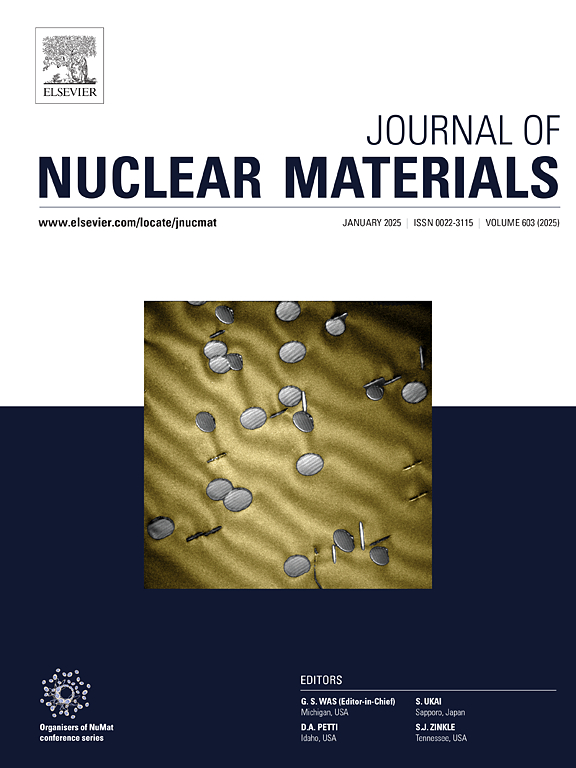Accelerated prediction of lattice thermal conductivity of Zirconium and its alloys: A machine learning potential method
IF 2.8
2区 工程技术
Q3 MATERIALS SCIENCE, MULTIDISCIPLINARY
引用次数: 0
Abstract
Zirconium alloy coating is an important direction for the modification of nuclear cladding materials. Thermal conductivity is a critical property of cladding materials. With extensively studying phonon-electron non-equilibrium energy transfer processes in the thermal transport of zirconium alloy coating, to distinguish the contributions from phonon and electron thermal conductivity of Zr alloys becomes crucial and necessary. In this work, we successfully predicted the lattice thermal conductivities of zirconium, Zr-Sn and Zr-Nb using machine learning potentials. Sn and Nb doping leads to a significant decrease in lattice thermal conductivity, which is mainly due to the alterations in phonon group velocity and phonon scattering. The larger atomic mass of doping elements and weakened interatomic interactions of Zr-Nb together lead to a significant decrease in phonon group velocity. Doping Sn and Nb also increases phonon-phonon scattering rate and three-phonon scattering channels, resulting in a shortening in phonon lifetime and a decrease in lattice thermal conductivity.
求助全文
约1分钟内获得全文
求助全文
来源期刊

Journal of Nuclear Materials
工程技术-材料科学:综合
CiteScore
5.70
自引率
25.80%
发文量
601
审稿时长
63 days
期刊介绍:
The Journal of Nuclear Materials publishes high quality papers in materials research for nuclear applications, primarily fission reactors, fusion reactors, and similar environments including radiation areas of charged particle accelerators. Both original research and critical review papers covering experimental, theoretical, and computational aspects of either fundamental or applied nature are welcome.
The breadth of the field is such that a wide range of processes and properties in the field of materials science and engineering is of interest to the readership, spanning atom-scale processes, microstructures, thermodynamics, mechanical properties, physical properties, and corrosion, for example.
Topics covered by JNM
Fission reactor materials, including fuels, cladding, core structures, pressure vessels, coolant interactions with materials, moderator and control components, fission product behavior.
Materials aspects of the entire fuel cycle.
Materials aspects of the actinides and their compounds.
Performance of nuclear waste materials; materials aspects of the immobilization of wastes.
Fusion reactor materials, including first walls, blankets, insulators and magnets.
Neutron and charged particle radiation effects in materials, including defects, transmutations, microstructures, phase changes and macroscopic properties.
Interaction of plasmas, ion beams, electron beams and electromagnetic radiation with materials relevant to nuclear systems.
 求助内容:
求助内容: 应助结果提醒方式:
应助结果提醒方式:


